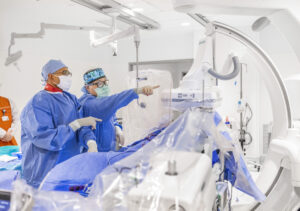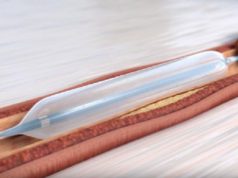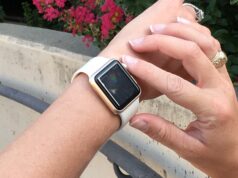
Like London buses, interventionalists have had a long wait for the US Food and Drug Administration (FDA) to approve a renal denervation device for the treatment of hypertension, only for two to come along within days of one another.
The news that Medtronic’s Symplicity Spyral radiofrequency system had received approval as an adjunctive treatment for hypertension from the US Food and Drug Administration (FDA) in late 2023, came just over a week after an announcement from Recor Medical, that its own, ultrasound-based denervation device—the Paradise system—had also been granted approval.
That two devices would gain FDA approval at all would have been virtually unthinkable almost a decade ago, when the release of results of the SYMPLICITY HTN-3 trial dented initial optimism in renal denervation as a treatment for hypertension, only for a new generation of sham-controlled trials to prompt a resurgence in interest for the therapy.
Proponents of renal denervation—an interventional procedure in which energy is targeted through a catheter to the renal nerves to modulate the sympathetic signalling between the kidneys and brain to reduce blood pressure—see the availability of the treatment as being a potential paradigm shift for the treatment of many thousands of patients with hypertension, offering a third way for those who cannot tolerate or adhere to antihypertensive medication, or for whom lifestyle modifications have had no effect.
“The approval of the renal denervation systems by the FDA is a game-changer for both interventional cardiology and the treatment of hypertension,” George Dangas (Icahn School of Medicine at Mount Sinai, New York, USA), president of the Society for Cardiovascular Angiography & Interventions (SCAI), said in the aftermath of the announcement of the Recor and Medtronic device approvals. “This innovative technology has the potential to revolutionise how we approach the management of high blood pressure which has grown tremendously globally, offering patients a safe and effective treatment option.”
Since the FDA approvals, many centres throughout the USA have begun offering the therapy to their hypertensive patients. Barry Bertolet (Cardiology Associates of North Mississippi, Tupelo, USA) performed the first commercial case using the Medtronic system in the southern US in late November.
“Performing the first commercial case in our region was important for two main reasons,” Bertolet tells Cardiovascular News, reflecting on the significance of the milestone. “Number one, it represented the start of a new era in the treatment of hypertension—meaning that an option beyond lifestyle modification and medications was available—and, number two, it represented the culmination of years of research and product development, which my team and I were dedicated to.”
Though both the Recor and Medtronic systems have been CE marked for some time, the FDA approvals potentially open the door to wider commercialisation of the therapy globally, and come soon after endorsement of the technique as a treatment option in patients with uncontrolled resistant hypertension from the European Society of Cardiology (ESC) Council on Hypertension and the European Association of Percutaneous Cardiovascular Interventions (EAPCI), as well as the release of guidelines from the European Society of Hypertension (ESH) stating that renal denervation may be proposed as an adjunctive therapy in select patients with resistant hypertension. Both of these developments are expected to broaden the adoption of renal denervation in Europe.

“FDA approval certainly provides reassurance for physicians in Europe that renal denervation indeed represents a safe and effective alternative to pharmacotherapy in uncontrolled hypertension,” Felix Mahfoud (Saarland University Hospital, Homburg, Germany), who has played a key role in the research of the therapy, tells Cardiovascular News. “Although not required for commercial use, I’m sure that FDA approval will further facilitate adoption of the technologies in geographies outside the USA.”
According to Mahfoud, though there is growing consensus on the use of the therapy, its adoption will be shaped by the willingness of healthcare systems to pay for the treatment.
“Societal consensus documents and hypertension guidelines now unanimously recommend renal denervation in certain patients with resistant or difficult to control hypertension,” he comments. “Despite these national and international recommendations, cost coverage remains challenging in some healthcare systems and countries. Overall, I think, we need to intensify our efforts to integrate patient preference into decision-making, not limited to hypertension management.”
Much of the impetus for the FDA’s decision comes from the generation of new evidence of the efficacy and safety of both devices. Data from the RADIANCE Global study programme, which looked at the Recor Paradise device, and the SPYRAL clinical programme, assessing Medtronic’s Symplicity Spyral system, were scrutinised in detail in August at a meeting of the FDA’s Circulatory Systems Devices Panel, which voted in favour of the data supporting the efficacy and safety of both devices, though the panel was split on whether the benefits of the treatment outweighed the risks for the Symplicity Spyral system.
For some who are sceptical of the technique, however, there are still questions as to whether the latest round of data is sufficient to support the widespread adoption of renal denervation, and whether the effect and durability of the intervention are enough to justify its use.
“In my opinion, the blood pressure lowering effect of renal denervation seems to have more to do with the population being studied than the catheter being used,” cardiologist Andrew Foy (Pennsylvania State University, Hershey, USA) tells Cardiovascular News, outlining his concerns. “Patient populations with non-resistant hypertension do best and seem to derive a modest blood pressure lowering benefit on the order of 4–5mmHg reduction in systolic blood pressure, which can be achieved by addition of a drug and rather easily in most patients.”
Foy has been a co-author on several meta-analyses looking at the technique, which have included data from both the RADIANCE and SPYRAL studies, and he says that these have pointed to a potential waning of the effect of the therapy over time, as well as highlighting what he sees as a questionable benefit of the treatment in patients with resistant hypertension.
“There seems to be a clear interaction between the efficacy of renal denervation and whether the patient population being studied had resistant versus non-resistant hypertension,” Foy adds. “That’s a very important issue when we’re talking about the clinical application of renal denervation in practice since, basically, its intent is to treat patients with resistant hypertension and not non-resistant hypertension. I think there are good reasons why we see this interaction and it is very likely to be valid.”
Renal denervation advocates, though, acknowledge that careful patient selection is important, and stress that the therapy is not an alternative to the current standards of care, medication and lifestyle modification, but should be offered when these have been found to be unsuccessful or are not possible.
“We will first educate the area primary care providers on initial guideline directed medical therapy,” says Bertolet of the decision-making process in his practice. “If a patient fails or is intolerant to an honest attempt to blood pressure control, then they should be referred to our clinic for evaluation of secondary causes of hypertension. If no secondary causes of hypertension are noted, we will discuss the option of additional medications versus renal denervation.”









